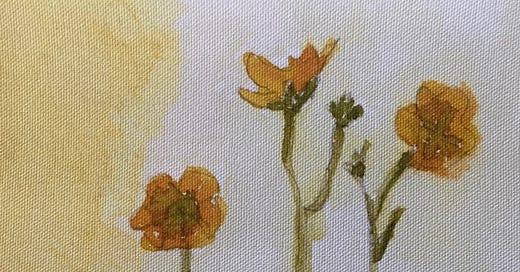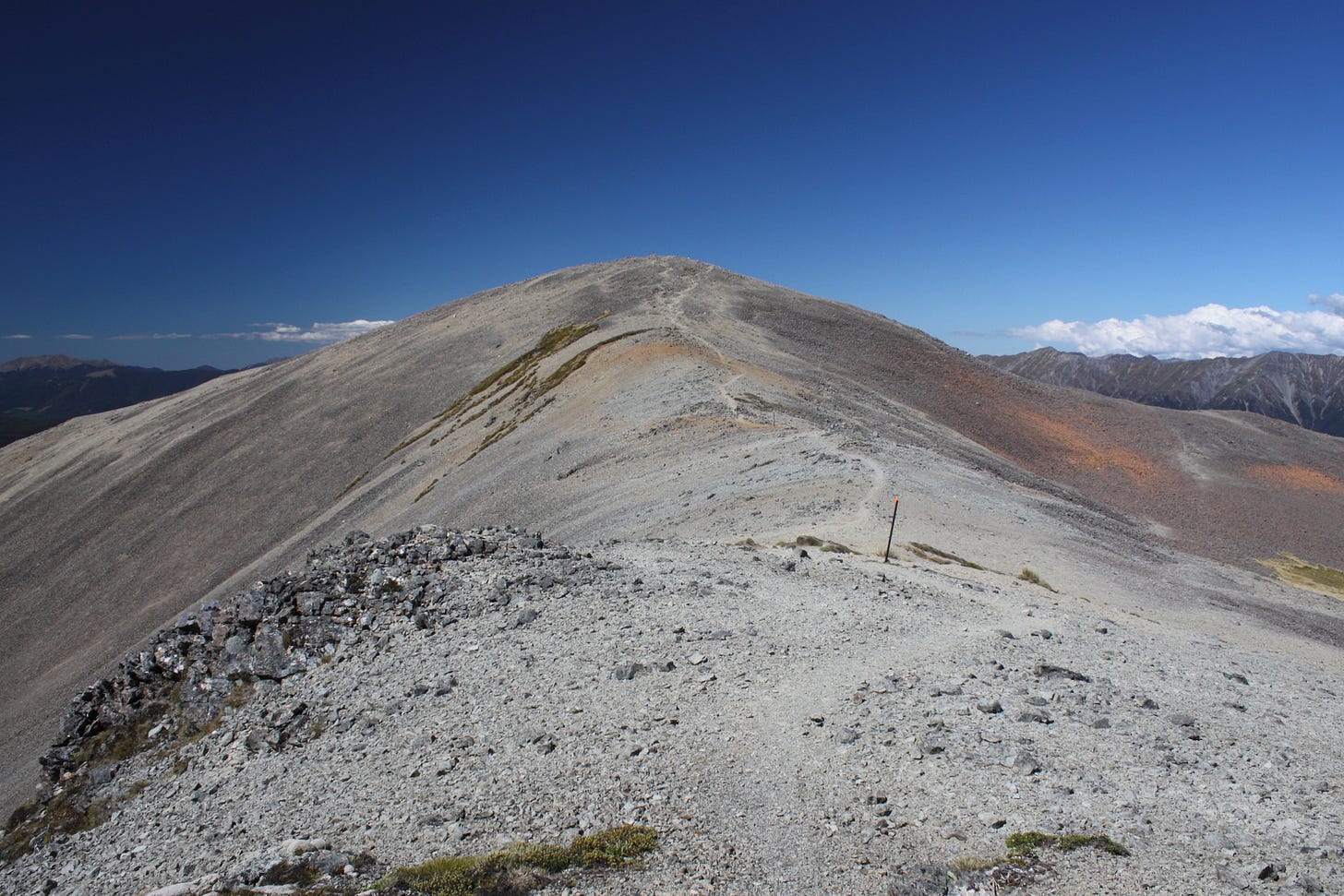Welcome to The Turnstone. Here, I help people understand important issues such as Covid-19, climate change and conservation. I send my articles out every Sunday - if you’d like them emailed to you directly, you can sign up to my mailing list.
Today I want to take a break from my usual articles to celebrate a milestone: I have been writing The Turnstone for three years now. A lot has happened since then, in my life and in the wider world. I’m wildly understating the reality when I say it hasn’t been an easy time. But although it has meant I often find myself learning things I wish I didn’t know, I’ve always been glad that I’m writing The Turnstone.
To celebrate the last three years, I’ve looked back and selected some of my favourite articles from my archive.
Year one
Although much of my writing has a New Zealand focus, one of my favourite articles from early on had nothing to do with New Zealand. Instead, it was about an outbreak of desert locusts in Africa and Asia. I spent hours digging through monthly locust monitoring reports published by the UN Food and Agriculture Organisation. It sounds tedious, and it was a little, but it showed the link between the conflict in Yemen and an outbreak affecting countries as far apart as Kenya and India.
Swarms (8 minute read)
During 2020, I was keenly watching for progress on vaccines against Covid-19. But I was also thinking about those who were less enthusiastic at the prospect of a vaccine. I knew that many people would be hesitant and that some people would be strongly opposed. My experience in risk communication made me concerned that those of us in favour of vaccines would inadvertently drive those who were uncertain towards those who were opposed. My fears were confirmed when I joined Twitter. So, I wrote a series of three articles about vaccines and risk communication, as a contribution to the discussion (the second and third articles are linked to the first).
The company of the dead: part one (8 minute read)
Also during 2020, I looked at the El Niño and La Niña climate patterns. Although the article begins with me contemplating unseasonably cold weather in December, it is still relevant now. La Niña has made a big contribution to the record-breaking wet summer in the north of New Zealand, and the devastating floods we have experienced. Now, forecasts from both New Zealand and overseas suggest we are heading into El Niño conditions.
Fickle winds (7 minute read)
As well as writing, I also read the work of other writers on Substack. One of the more well-known writers I’ve been following since then is Katelyn Jetelina of Your Local Epidemiologist. She does great work writing about Covid-19, vaccines and other public health issues. Lesser-known writers I’ve been following for years include Lisa Jensen, who writes Incurably Human and Paul Hormick who writes The Green Dispatch. Lisa writes some lovely reflections on questions like “who is supporting you?” and “what do you long for?” Paul writes about the environment, with a particular focus on biodiversity and also does some great book reviews. I encourage you to check out their work.
Year two
For my second year of writing, I widened my range of topics. It is hard for me to pick favourites, but
I can’t go past an articles I wrote about invasive species and biodiversity conservation in New Zealand. In researching this article, I visited Pūkaha, where they breed one of New Zealand’s most endangered birds, known as the shore plover or tūturuatu. The birds are bred in captivity so that they can be released back into the wild. The story of the shore plover opened my eyes to some of the challenges we face in trying to preserve our rarest native species.
Distress call (8 minute read)
Forests receive a lot of attention in the discussion about climate change. Although most of that discussion is about tree planting, it’s crucially important that we preserve the forest we have remaining. In the following article, I looked at deforestation around the world. Some of what I found was demoralising, such as the condition of south-east Asia’s rainforests, but I also found some glimmers of good news.
Out of breath (8 minute read)
When I’m putting together my articles, I always learn new things. Sometimes, though, a particular thing I learn stands out. That was the case when I wrote about Antarctic’s ice shelves. It wasn’t the research I did for the article which astounded me, but a comment from one of my readers. He said that “average sea level rise” was not a helpful concept, because the sea isn’t rising at the same rate around the world. That stopped me in my tracks. How could that be? So, I looked at sea level and I was struck with wonder.
The rising tide (9 minute read)
In my second year of writing, I found many more wonderful writers, and I’ve become part of a writing community. I regularly correspond with other writers around the world now, and that’s a real joy.
Some of the writers I follow are also artists, and when I don’t have the energy for reading, I enjoy their newsletters just for the pictures. I’d particularly like to mention the newsletters of Melinda Yeoh, Hopemail, and Nishant Jain, The SneakyArt Post. Their work always makes me smile. They both also sell prints and ship worldwide. The delightful buttercup image below is a print from Melinda.
When I have time for reading, one writer who always brings a me smile is Allison Epstein, who writes Dirtbags through the ages. It’s exactly what it sounds like – history’s least pleasant people – but it’s fun to read. Other fun reads are the newsletters of Mike Sowden, who writes Everything is Amazing and Heather Wall, who writes Natural Wonders. Their work makes a great antidote to the kinds of articles I write, which I admit don’t always leave me feeling cheerful.
Year three
For my third year of writing The Turnstone, I’ve had climate change as a central focus. What has amazed me is how complex the issues are, and how so much of what we do is linked to carbon emissions. Travelling = carbon emissions, eating = carbon emissions, building = carbon emissions. Although it shocked me, one of my favourite articles was the one I wrote about concrete and how concrete production contributes to climate change. Yes, it was alarming, but the fascination balanced some of that out.
A monumental problem (8 minute read)
There are problems other than climate change which we can’t afford to ignore. One problem is declining water quality, especially that due to excess fertiliser use. This problem intersects with climate change in a number of ways. The simplest is that we emit a lot of carbon in the process of manufacturing the fertiliser. But, as I found when I researched my article, much of the fertiliser we apply to our fields doesn’t go to growing grass or food crops, but ends up washing into rivers and then the ocean.
Out of thin air (8 minute read)
I’ve also been trying to encourage others – and myself – to talk more about climate change. We need to work together to solve climate change, and to do that we need to have better conversations about it. It’s not just a matter of knowing the facts, though. We need to be able to listen to the perspectives of others, acknowledge the feelings of those who feel afraid or hopeless, and recognise when we are being fed misinformation, without starting an argument.
I’ve shared a lot of different resources to help us have better conversations about climate change, but I think my favourites are the FLICC technique and the Cranky Uncle game from John Cook in Australia. These resources teach us to spot misinformation, and they do so in a creative and engaging way.
Talking about climate change #10 (4 minute read)
I’ve also been reading more work by other writers about climate change. What is fascinating is that everyone has a different angle. An enthusiastic team writes Climate Club, which suggests practical actions you can take to help fight climate change. They are based in New Zealand, but there are also newsletters focused on practical action from other places. Linsday Nunez writes Save Our Happy Place for the USA and and another group who writes Climate Club Queensland.
I’ve been reading other climate change newsletters as well. Michael Thomas writes Distilled, which looks at climate change from a more political angle. Naman Bajaj writes Not My Problem, focused on solutions which people are implementing. Nicole Kelner shares art to help people understand climate change in Arts and Climate Change. And I have to mention Bernard Hickey from The Kākā, who doesn’t just write about climate change, but other important issues such as wealth inequality and child poverty.
What’s next?
Writing The Turnstone has been a real force for good in my life. It’s given me a place to express things which are important to me, it’s given me a sense of purpose and it’s connected me with some wonderful people. I have particularly enjoyed speaking to scientists whose work is helping to solve some of our pressing issues. There are more of those interviews to come.
I’m trying to look more at solutions, because I don’t want to send a constant barrage of bad news your way without offering some hope. There is hope out there. People are doing some amazing things. I’m looking forward to sharing some of them with you.
I hope you enjoy this selection of favourite articles and newsletters. Do you have a favourite? I’d love to know which articles of mine you’ve liked best. If you have a favourite article from another writer, or know a Substack writer who deserves more attention, I’d love to hear about that too. Please, share a link in the comments.
Most articles in The Turnstone are free, but you can support my work and an receive additional material, including more in-depth interviews, with a monthly or annual subscription. Click the “Subscribe now” button below for options.
If you would like to support The Turnstone with a one-off contribution, click the “Buy me a coffee” button below.








Congratulations Melanie on creating such a consistently accessible and useful body of work. I have a sense of how hard you work and how effective it is. Thankyou. Bernard
This celebration post is a great idea, and demonstrates what a positive force your writing has been...and will continue to be—thanks for all of your hard work on such vital subjects.